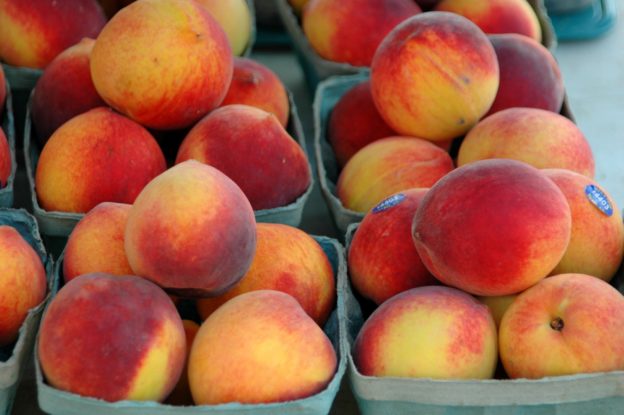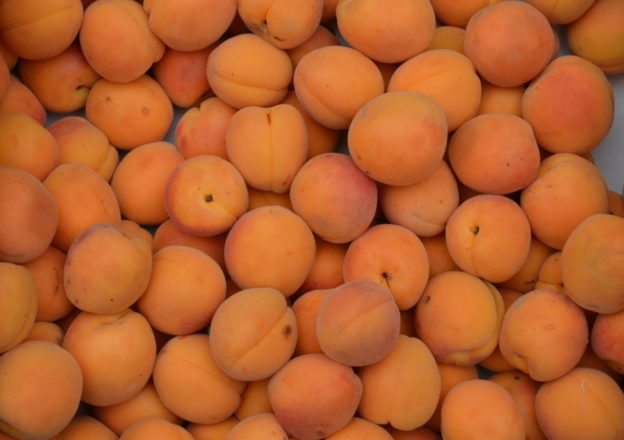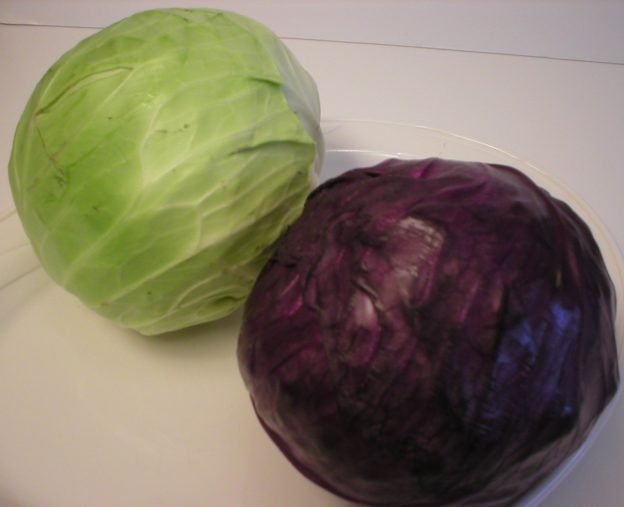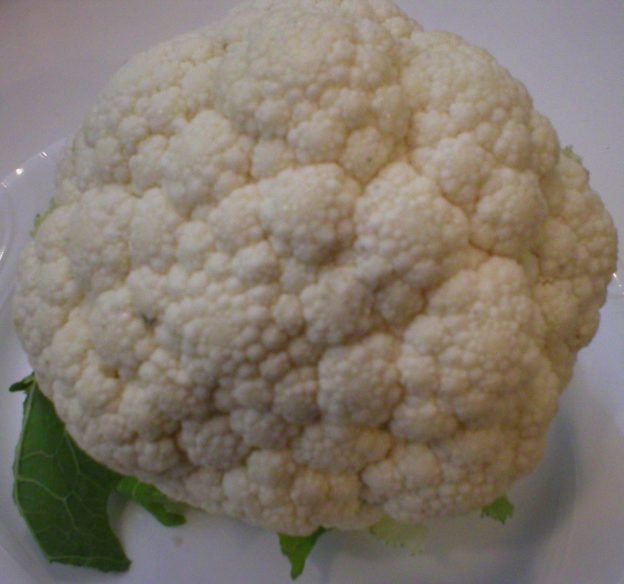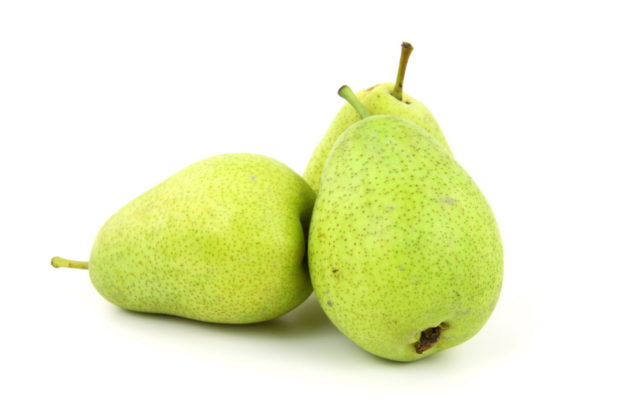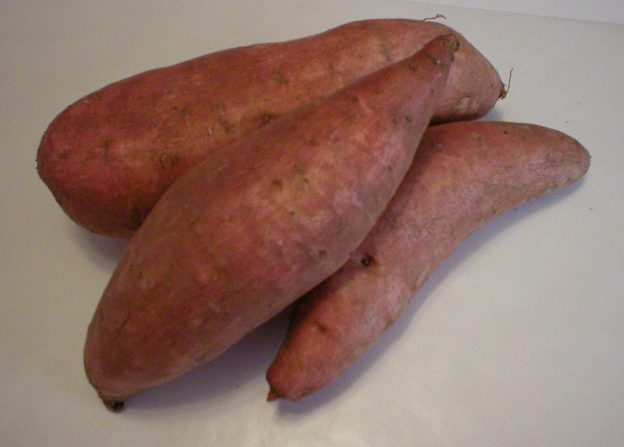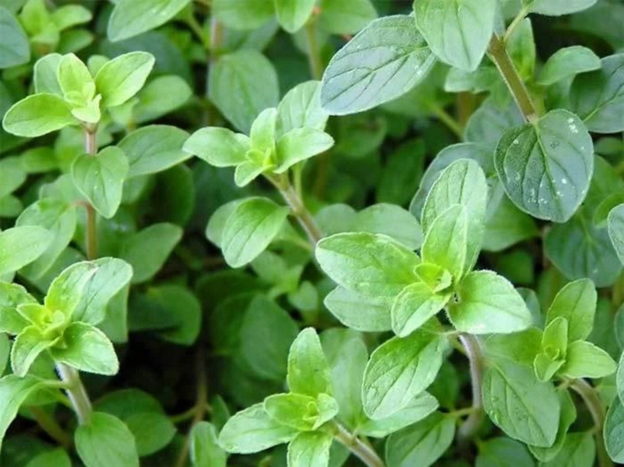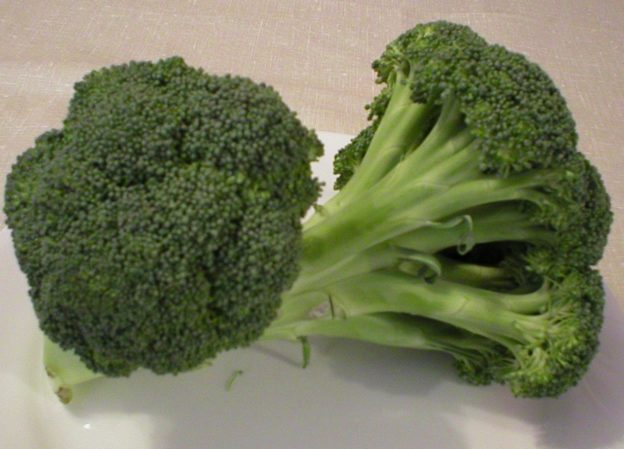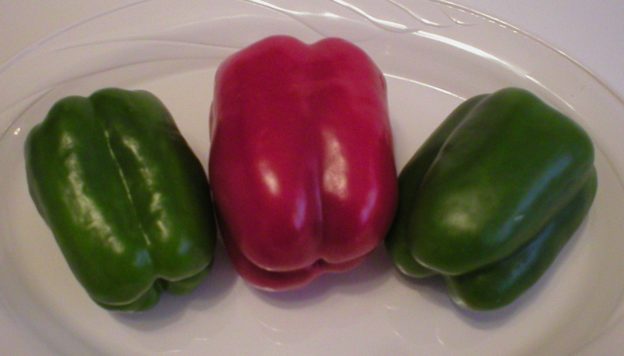Peaches 101 – The Basics
About Peaches
Peaches are stone fruits, native to northwest China. From there, the trees spread westward through Asia into the Mediterranean countries, then onward to other parts of Europe. Spanish explorers transported peaches to the Americas, where they were found in Mexico as early as 1600. Large-scale production of peaches started in the United States in the 19th century. Early crops were of poor quality. With improved techniques of grafting, large commercial peach orchards were eventually established.
The color of peach flesh can be white or yellow to orange. There are two main varieties of peaches: freestone, where the flesh easily separates from the one large pit or stone, and clingstone, where the flesh adheres securely to the stone. The freestone varieties are usually eaten fresh, “out of hand,” since the pit almost falls out once exposed. They can also be used in any application, like baking, cooking, canning and freezing. Clingstone peaches are a bit sweeter, smaller, and juicier than freestone varieties. They are excellent options for canning and preserving. Most commercially canned peaches are clingstone varieties.
Thousands of varieties of peaches have been developed over the years. Yellow-fleshed varieties are the most popular in North America. Europeans enjoy both white and yellow fleshed peaches. Globally, China, Italy, Spain, and the United States are major producers of peaches.
Nutrition and Health Benefits
Peaches have noteworthy nutritional value and health benefits. One medium peach contains Vitamin C, Vitamin A, fiber, potassium, niacin, Vitamin E, Vitamin K, copper and manganese. They also have smaller amounts of magnesium, phosphorus, iron, and B-vitamins. One medium peach has about 58 calories, so they would make a healthy, low-calorie snack or addition to any meal or dessert.
Peaches also contain a number of antioxidants, compounds that are known to neutralize harmful molecules in the body, protecting us from aging and assorted diseases. It’s noteworthy that the fresher and riper a peach is, the more antioxidants it contains.
Digestive Help. The fiber in peaches is half soluble and half insoluble. This is especially helpful since each type of fiber serves its own purpose and they are not interchangeable. Soluble fiber feeds our gut bacteria, keeping colonies strong and active. Soluble fiber also binds with bile in the digestive tract, removing it in the feces. This forces the liver to make more bile from existing cholesterol, which in turn, helps to keep our blood cholesterol levels in check. Insoluble fiber is important for helping to propel the contents of the digestive tract forward, preventing constipation. This also helps to ward off disorders like Crohn’s disease, irritable bowel syndrome, and ulcerative colitis. It is important to note that much of the fiber in peaches is found in the skin, so to get the most benefit from your peaches, don’t peel them, if possible.
Heart Health. As mentioned under “Digestive Help,” the soluble fiber in peaches helps to keep cholesterol levels down. This in itself helps to ward off heart and cardiovascular diseases. Also, potassium, which is found in peaches, is an electrolyte known for helping to manage the balance of fluids in the body. It also promotes lower blood pressure, by helping blood vessels to relax and expand appropriately, allowing for better blood flow and transport of nutrients and oxygen throughout the body.
Skin Health. The high level of Vitamin A and antioxidants found in peaches helps to promote healthy skin. First, peaches are high in Vitamin C. This crucial vitamin is important in the development and maintenance of collagen in the body. Collagen is vital in providing a support system for the skin, promoting wound healing, and strengthening the skin. It can also improve the appearance of skin by reducing wrinkling, improving elasticity, smoothing roughness, and improving skin color.
Vitamin A, Vitamin E, and the other antioxidants (along with Vitamin C) found in peaches work together as anti-inflammatory agents, helping to protect the skin from sun damage, improving the skin tone, calming inflammation by squelching harmful free-radical molecules, and helping to protect against premature aging. Also, since peaches are largely water, they help to hydrate the skin, giving it a healthy glow and minimizing wrinkles.
Cancer Protection. The skin and flesh of peaches are rich in carotenoids, caffeic acid, and polyphenols. These types of antioxidants have been found to have anticancer properties, limiting the growth and spread of cancer cells and also helping to prevent non-cancerous tumors from becoming malignant. Animal and human studies confirm that peaches may be helpful in preventing breast cancer.
Allergy Symptoms. Peaches may help to reduce allergy symptoms. Studies have shown that peaches may help to reduce or prevent the release of histamines in the blood after exposure to allergens, thereby reducing allergy symptoms. More research is needed in this area, but the findings look promising.
Immunity. The antioxidants found in peaches may help to boost immunity by fighting certain types of bacteria.
Diabetes. Animal studies found that compounds in peaches may help to prevent high blood sugar levels and insulin resistance. More studies with humans are needed in this area, but it appears that peaches, along with other foods high in antioxidants, may be helpful in preventing and treating diabetes and insulin resistance.
Eye Health. The powerful antioxidants, lutein and zeaxanthin found in peaches, helps to protect the retina and lens of the eyes. Along with that, the compounds have been shown to reduce the risk of macular degeneration and cataracts, two common eye disorders that hinder the vision of many people. The Vitamin A found in peaches also is important for supporting eye health. A serious Vitamin A deficiency causes xerophthalmia, which can result in eye damage causing problems from night blindness to complete and irreversible total blindness. In fact, severe Vitamin A deficiency is the leading cause of blindness among children in underdeveloped nations around the world.
Cognitive Health. Antioxidants, like those found in peaches, are known to fight harmful molecules in the body. When affecting the brain, harmful free-radical molecules can cause neurodegenerative diseases like dementia and Alzheimer’s disease.
Ingesting ample antioxidants from foods in their natural form is the best way to obtain these helpful compounds. Including peaches and other fresh fruits and vegetables in your daily diet is a simple way to help ensure you lower your risk for serious conditions as detailed above.
How to Select Fresh Peaches
When choosing fresh peaches, bear in mind your personal preference or intended use. The white-fleshed peaches are sweeter and less acidic than the yellow-fleshed peaches, which are more of a sweet-tart flavor.
When buying fresh peaches, look for those that are hard or only slightly soft, with no bruises or wrinkles. Don’t be shy…smell the peach before you place it in your cart. Those that smell sweeter will be riper, sweeter in flavor, and ready to eat sooner than those with little to no aroma. Also, you can tell if a peach is ripe and ready to eat by gently pressing down on its flesh and feeling it slightly give…like you would test an avocado for ripeness.
Avoid peaches that are brownish, damaged, mushy or wrinkled, because they are old, overripe, and will not last long.
How to Store Fresh Peaches
If your fresh peaches are not fully ripe, they can be placed on the kitchen counter in a single layer, away from sunlight and heat. They should ripen within one to three days.
Ripe peaches will last up to one week when kept at room temperature. If you won’t be able to use them within that time, place them in the refrigerator to slow down the ripening process. They may be kept in an open area of the refrigerator, or in a crisper drawer to help protect them from damage. If they are placed in the crisper drawer, leave the air vent open, on the low humidity setting.
Quick Ideas and Tips for Using Peaches
* Try grilling or roasting peaches, then add them to a salad.
* Try grilled or roasted peaches with a scoop of vanilla ice cream or mascarpone cheese.
* Serve chicken with a peach sauce.
* Make a peach salsa to serve on tacos or pork tenderloin.
* On a hot day, try adding some sliced peaches to your favorite iced tea. For the most flavor, smash the peaches in the bottom of the glass before adding the ice cubes and tea.
* Blend some peaches with coconut milk for a “peaches and cream” smoothie or dessert. Add some dates or sweetener of choice, if desired. Add banana for more richness, if desired. Spice it up if you want with a little cinnamon and nutmeg.
* Blend peaches with yogurt or coconut cream and freeze it in popsicle molds. Sweeten it with dates or sweetener of choice, if desired. Add a touch of lemon juice for a little tartness and color retention, if desired.
* Add diced peaches to your morning oatmeal.
* Blend peaches with raspberries to make a sauce, then serve it over ice cream or coconut milk sorbet. Top with chopped almonds and enjoy!
* Try a salad with a bed of mixed greens mixed with cherry tomatoes and peach slices. Top with some fresh basil leaves and drizzle with a balsamic-honey dressing.
* The lighter, white flesh peaches taste sweeter and are less acidic than the traditional yellow flesh peaches. The yellow flesh peaches are sweet, but more acidic which makes them a little tangier.
* Peaches come in two basic varieties regarding their pits or stones. They can be freestone, where the flesh separates easily from the stone. Or they can be clingstone, where the flesh adheres to the stone and is not easily removed. The freestone peaches are easier to work with since the stone comes out easily. They also tend to be larger and less juicy than their counterparts, the clingstones. Clingstone peaches tend to be slightly softer, sweeter, and juicier than freestone peaches.
* Botanically speaking, nectarines are actually a variety of peach. They are so closely related that sometimes nectarines naturally appear on peach trees.
* 1 pound of fresh peaches = 4 medium peaches = about 2-1/2 cups chopped or sliced = about 1-1/2 cups pureed.
* If you need fresh peaches for a recipe and don’t have enough, even though the flavors may be a bit different, the following fruit may be used as a substitute: nectarines, apricots, plums, mangoes, papaya, cherries, and pluots or apriums (crosses between plums and apricots).
* If you need dried peaches for a recipe and don’t have enough, even though the flavors may be a bit different, the following may be used as a substitute: dried apricots, dried nectarines, and dried cherries.
* Top rice pudding (or any other pudding) with diced fresh peaches.
* Try a peach parfait by layering diced fresh peaches, yogurt, banana, pistachios, and granola.
* If you buy conventionally grown peaches and are concerned with pesticide or other chemical residues on your fruit, most of it can be easily removed by a simple (scienced-based!) 15-minute soak in a baking soda solution. Combine a ratio of 1 teaspoon of baking soda in 2 cups of water. Make up enough solution to be able to submerge your peaches. Weigh the peaches down with a plate to keep them under the water and allow them to soak for 15 minutes. Then simply rinse them with clean water and pat them dry. Store them and use them as usual. To see a demonstration on this technique, watch this video … https://youtu.be/AsUAD6EWyzw
Herbs and Spices That Go Well with Peaches
Allspice, basil, cardamom, cilantro, cinnamon, cloves, coriander, lemongrass, lemon verbena, mint, nutmeg, pepper, rosemary, saffron, salt, tarragon, vanilla
Foods That Go Well with Peaches
Proteins, Legumes, Nuts, Seeds: Almonds, bacon, beef, cashews, ham, hazelnuts, macadamia nuts, nuts (in general), pecans, pistachios, pork, poultry, prosciutto, pumpkin seeds, salmon (and other seafoods), walnuts
Vegetables: Arugula, chiles, endive, fennel, ginger, greens (salad), onions (red), radishes, scallions, tomatoes, watercress
Fruits: Apples (fresh, juice), apricots, avocado, bananas, berries (in general), blackberries, blueberries, cherries, coconut, currants, grapes, lemon, lime, mangoes, nectarines, orange (fresh, juice, liqueur, zest), papaya, passion fruit, pineapple, plums, pomegranates, raspberries, strawberries
Grains and Grain Products: Grains (in general), oatmeal, oats, quinoa, wheat berries
Dairy and Non-Dairy: Butter, buttermilk, cheese (esp. blue, burrata, cream, goat, mozzarella, ricotta), cream, crème fraiche, mascarpone, sour cream, yogurt
Other Foods: Caramel, chocolate, honey, lavender, maple syrup, molasses, oil (olive), rum, sherry, spirits (i.e., bourbon, brandy, cognac, Cointreau, Kirsch), sugar, vinegar (i.e., apple cider, balsamic, champagne, rice, wine), whiskey, wine (i.e., red or white, fruity, sparkling, and/or sweet)
Peaches have been used in the following cuisines and dishes…
Baked goods (i.e., pies, scones), chutneys, compotes, desserts (i.e., cobblers, crisps, crumbles, Melba, pies), ice cream, salads (i.e., fruit, grain, green), salsas, smoothies, sorbets, soups (i.e., cold and/or fruit), Southern (U.S.) cuisine
Suggested Food and Flavor Combos Using Peaches
Add peaches to any of the following combinations…
Almonds + Cinnamon + Yogurt
Almonds + Lemon + Olive Oil + Saffron
Balsamic Vinegar + Lettuce + Spinach + Maple syrup + Olive Oil
Balsamic Vinegar + Mint + Ricotta
Basil + Mozzarella Cheese
Berries + Lemon
Blueberries + Lemon + Maple Syrup
Blue Cheese + Hazelnuts
Cashew Cream + Balsamic Vinegar
Cherries + Balsamic Vinegar
Cilantro + Ginger + Lime
Cinnamon + Honey + Lemon + Yogurt
Fennel + Lemon
Ginger + Honey + Lemon + Lemongrass
Ginger + Lemon
Honey + Nuts + Oats/Oatmeal
Mangoes + Raspberries
Maple Syrup + Nuts + Orange Juice + Ricotta
Maple Syrup + Orange + Vanilla
Mascarpone + Strawberries + Vanilla
Pistachios + Vanilla
Recipe Links
34 Peach Recipes to Make This Summer https://www.foodandwine.com/fruits/peach/peaches
13 Most Delicious Ways to Eat Peaches https://www.self.com/gallery/peach-recipes
Baked Peaches https://www.wellplated.com/baked-peaches/#wprm-recipe-container-39548
Peaches and Berries with Lemon-Mint Syrup https://www.onceuponachef.com/recipes/peaches-berries-with-lemon-mint-syrup.html
39 Perfect Peach Desserts https://www.epicurious.com/recipes-menus/fresh-peach-desserts-gallery
Peach Pie Smoothie https://www.foodnetwork.com/recipes/ellie-krieger/peach-pie-smoothie-recipe-1940422
Savory Peach Chicken https://www.foodnetwork.com/recipes/ellie-krieger/savory-peach-chicken-recipe-1951238
Grilled Chicken Breasts with Spicy Peach Glaze https://www.foodnetwork.com/recipes/bobby-flay/grilled-chicken-breasts-with-spicy-peach-glaze-recipe-1922684
15 Savory Peach Recipes https://www.delish.com/cooking/g1292/savory-peach-recipes/?slide=16
Fresh Peaches with Blueberries and Yogurt http://www.whfoods.com/genpage.php?tname=recipe&dbid=146
43 Peach Recipes That Make the Most of Summer’s Juiciest Fruit https://www.epicurious.com/ingredients/peach-recipes-gallery
55 Juicy Peach Recipes for (an Endless) Summer https://www.countryliving.com/food-drinks/g1499/peach-recipes/
70+ Fresh Peach Recipes to Savor This Summer https://www.southernliving.com/food/holidays-occasions/summer-peach-recipes
60 Ways to Use a Farmers’ Market Haul of Fresh Peaches https://www.cookinglight.com/food/in-season/peach-recipes
Resources
https://producemadesimple.ca/what-goes-well-with-peaches/
https://www.hgofarms.com/peach-pairings-to-try/
https://www.thespruceeats.com/varieties-of-peaches-4057064
https://thebakersalmanac.com/fruit-flavor-pairing-chart/
https://www.healthline.com/nutrition/peach-fruit-benefits#TOC_TITLE_HDR_5
https://www.medicalnewstoday.com/articles/274620#benefits
https://www.verywellhealth.com/antioxidants-for-skin-health-4587778
https://www.health.com/nutrition/health-benefits-peaches
https://www.britannica.com/plant/peach
https://www.thekitchn.com/whats-the-difference-between-freestone-and-clingstone-peaches-246304
Joachim, David. (2010) The Food Substitutions Bible. 2nd Edition. Toronto, Ontario, Canada: Robert Rose, Inc.
Page, Karen. (2014) The Vegetarian Flavor Bible. New York, NY: Little, Brown and Company.
About Judi
Julia W. Klee (Judi) began her journey enjoying “all things food” in elementary school when she started preparing meals for her family. That love of food blossomed into a quest to learn more and more about health and wellness as related to nutrition. She went on to earn a BS Degree in Food and Nutrition, then an MS Degree in Nutrition. She has taught nutrition and related courses at the college level to pre-nursing and exercise science students. Her hunger to learn didn’t stop upon graduation from college. She continues to research on a regular basis about nutrition as it relates to health. Her hope is to help as many people as possible to enjoy foods that promote health and wellness.

